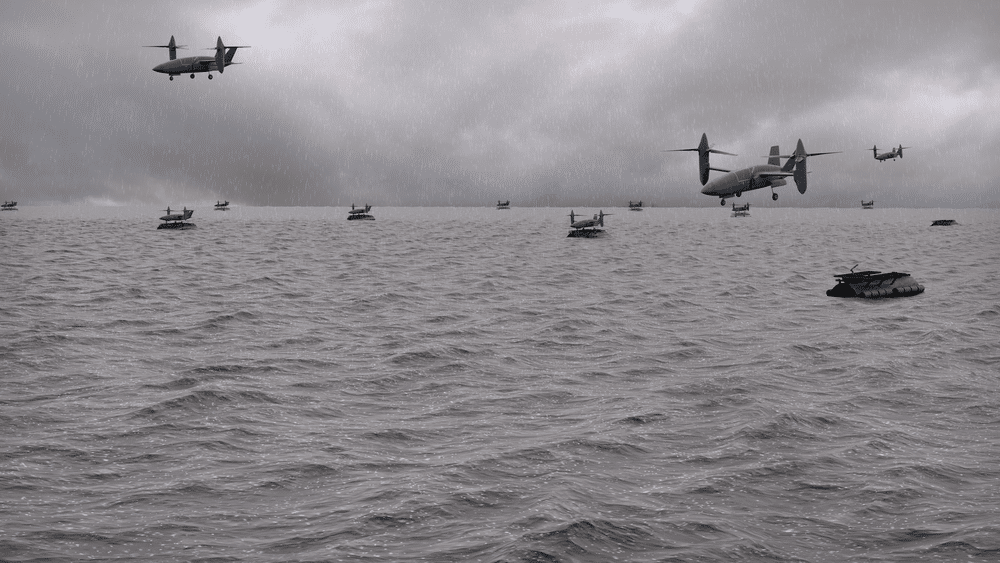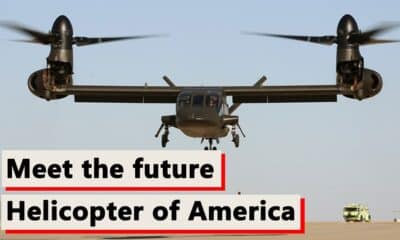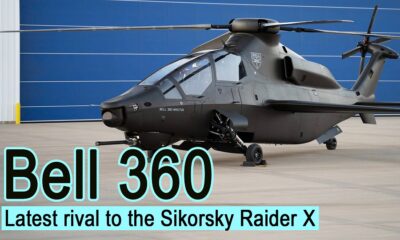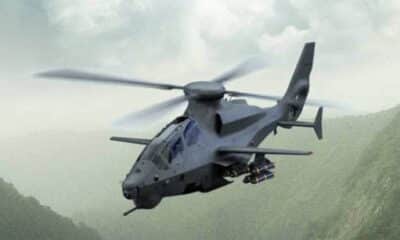Aerospace
Bell and Pratt & Whitney to Collaborate on High-Speed VTOL Propulsion Technology

As industry partners interested in accelerating the future potential of High-Speed Vertical Takeoff and Landing (HSVTOL)technology, Bell and Pratt & Whitney are collaborating on propulsion solutions for the development of HSVTOL technology.
Pratt & Whitney Canada Marks One Billion Flying Hours(Opens in a new browser tab)
Bell continues to work with the U.S. government and its industry partners to reduce risk and develop capability requirements. As Bell continues to build its strong team, we’re having open discussions and collaborating with industry thought leaders, including Pratt & Whitney, to rapidly deliver HSVTOL capabilities to the warfighter.
“We’re excited to dig into HSVTOL propulsion technology research with Bell and showcase what this next-generation capability could bring to USAF and other warfighters,” said Dr. Steven Burd, Director and Chief Engineer of Advanced Military Engine Programs, Pratt & Whitney.
Bell is actively developing innovative vertical lift technologies including the HSVTOL family of vehicles. HSVTOL provides next-generation capability in vertical lift speed, range, and survivability. This type of technology blends the maneuverability of a helicopter with the speed, range and survivability features of a fighter aircraft. Bell’s HSVTOL technology may serve a variety of complex missions in the future battlespace for runway independent agile mobility, SOF infil/exfil, personnel recovery, and Strike/ISR.
“HSVTOL propulsion technology is one of the key technical areas to develop for future capability, and we’re thrilled to leverage expertise from Pratt & Whitney to explore ways to mature technology for these concepts,” said Lee Anderson, Director of Innovation, Bell.
HSVTOL technology leverages existing Bell experience with the development of high-speed vertical lift aircraft, with the Bell 360 Invictus dashing over 200 knots, and the Bell V-280 Valor cruising to over 300 knots. HSVTOL development unlocks next-generation capability for speed, range, and survivability. HSVTOL’s runway flexibility provides the capability to utilize runways with conventional jet takeoff when runways are intact and independence with short field takeoff and vertical takeoff when runways are compromised

Aerospace
Which is bigger 777x or 787 aircraft ?

The 777X is a new series of the Boeing 777 family and is designed to be larger and more efficient than its predecessor. It features two variants: the 777-8 and the 777-9, being the larger of the two.
The Boeing 777X emerges as the larger sibling within the Boeing family, representing a significant leap forward in both size and efficiency. Comprising two variants, the 777-8 and the 777-9, the latter takes the crown as the larger of the two. With its expansive fuselage and impressive wingspan, the 777X is tailored for long-range journeys and boasts a substantial passenger capacity.
On the other hand, the Boeing 787, affectionately known as the Dreamliner, occupies a niche in the market as a smaller yet formidable aircraft designed for medium to long-range flights. Its distinguishing feature lies in its composite fuselage, a technological marvel that renders it lighter and more fuel-efficient compared to conventional aluminum counterparts. The Boeing 777X is larger than the Boeing 787 aircraft.
When it comes to passenger capacity, the 777-9 reigns supreme, typically accommodating a sizeable contingent of 400-425 passengers in its standard configuration. In contrast, the 787, with its more modest dimensions, typically carries between 240-290 passengers, depending on the variant and layout.
One of the remarkable innovations introduced with the 777X is its folding wingtips, a feature designed to address the logistical challenges of accommodating such a large aircraft in conventional airport gates. These folding wingtips enable the 777X to retract its wings, allowing it to fit into gates designed for smaller aircraft while still reaping the benefits of an extended wingspan during flight, thereby enhancing fuel efficiency and operational flexibility
Aerospace
China Secures Production Certificate for Mass Production of Pilotless eVTOL Aircraft

The first passenger-carrying pilotless electric vertical takeoff and landing (eVTOL) aircraft in the world, the EH216-S, has received the Production Certificate for its eVTOL aircraft from the Civil Aviation Administration of China (CAAC).
This is a significant milestone for EHang Holdings Limited, the leading UAM technology platform company in the world. This outstanding accomplishment is another big step towards mass manufacturing for the eVTOL aircraft and the ensuing commercial operations, building on the ground-breaking acquisition of the Type Certificate and the Standard Airworthiness Certificate for the EH216-S.
The PC is a crucial certificate that the aircraft maker receives from the CAAC, the country’s aviation authority. By obtaining this certificate, EHang has demonstrated that it has set up a quality management system for mass production that satisfies the airworthiness regulation standards set forth by the CAAC, and the company has been given permission to continue producing mass quantities.
It is also a strong guarantee of the calibre of the goods made by EHang. Raw materials, supplier management, manufacturing organisation, production quality control, aircraft pre-delivery test, after-sales repair and maintenance, etc. are all included in the mass production quality management system for the EH216-S.
To ensure that every aircraft and its components that roll off the production line strictly adhere to the approved type design and safety requirements, the system sets clear guidelines and documentation for every step in the production procedure. This ensures comprehensive traceability and safety control.
Aerospace
Four Airbus A380 Superjumbos lined up to be scrapped

In a strategic move aimed at reclaiming valuable resources from the iconic Airbus A380 aircraft, VAS Aero Services and Dr. Peters Group have announced a significant collaboration.
This partnership marks a milestone in aviation logistics and aftermarket services, with four of these colossal planes slated for teardown and redistribution of used serviceable material (USM).
The venture between VAS Aero Services, renowned for its expertise in aircraft dismantlement, and Dr. Peters Group, a prominent Germany-based investment fund management firm, underscores a commitment to sustainable aviation practices. This isn’t their first foray into scrapping A380s; their successful partnership has already seen the dismantlement of these aircraft, making them pioneers in this niche.
Under the agreement, the latest consignment brings the tally to eight A380s entrusted to VAS by Dr. Peters Group. Managing Director Christian Mailly of Dr. Peters Group emphasized the trust placed in VAS, citing their unparalleled capabilities in dismantlement and aftermarket sales network. It’s a strategic move in response to the growing demand for quality USM parts, particularly with the resurgence in reliance on the A380.
Notably, the teardown process will be carried out at various locations, optimizing the positioning of harvested parts to cater to different markets. While some parts will be positioned in Europe to support operators in the region and the Middle East, others will remain in the Asia-Pacific region. This meticulous strategy ensures efficient access to spare parts, benefiting MROs and airlines across these markets.
The decision to retire these A380s comes at a time when operators are reassessing fleet strategies amidst evolving market dynamics. Despite initial plans for quick retirement due to the emergence of more fuel-efficient alternatives, factors such as a rebound in long-haul demand and delays in new widebody deliveries have prompted operators to reconsider. The A380, with its unique capacity and capabilities, presents a practical solution for short-term capacity management.


























